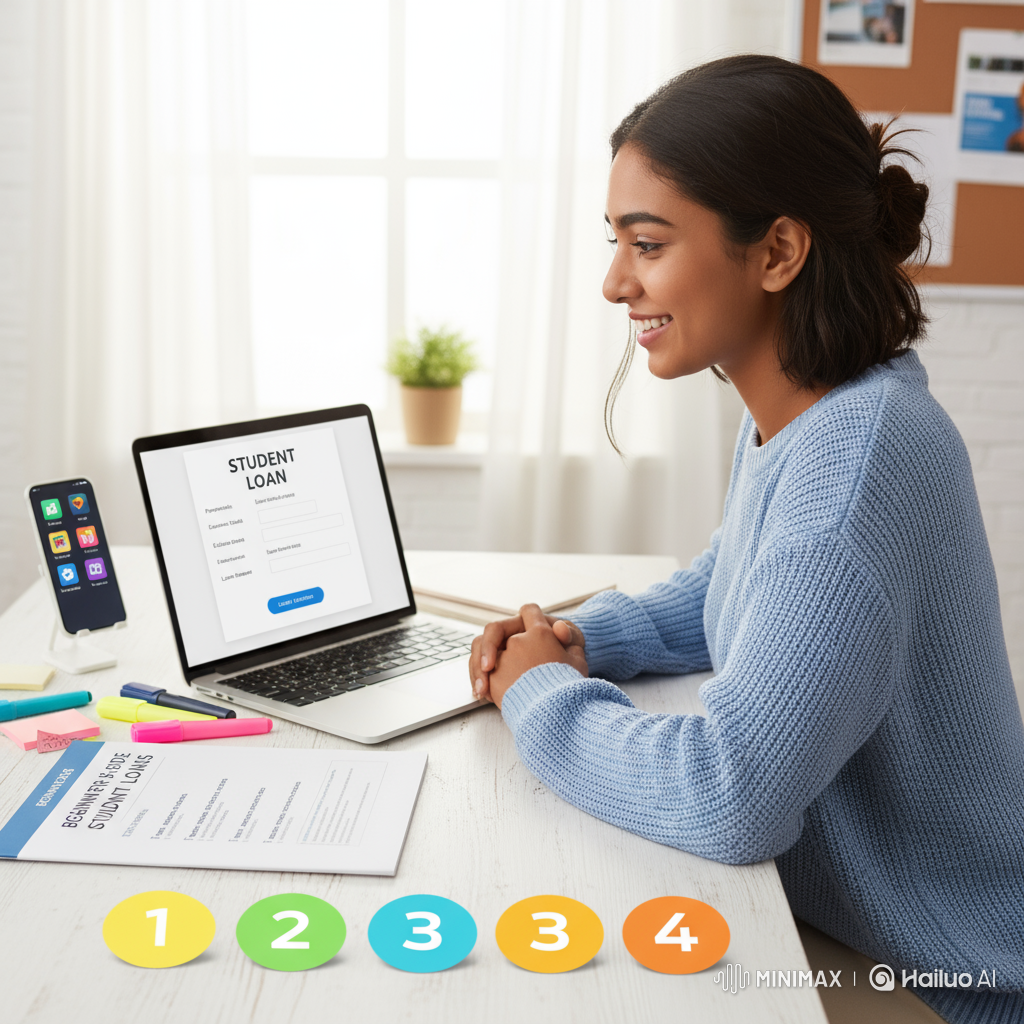Understanding how student loans function from start to finish helps you borrow smarter and repay confidently.
As someone who’s advised students from application to their final payment, I’ve seen how knowledge turns fear into control — and control into freedom.
The Student Loan Lifecycle at a Glance
| Stage | What Happens | Your Key Action |
|---|---|---|
| Application | Submit FAFSA or private loan form | Compare options carefully |
| Disbursement | Funds sent to your school | Track tuition and refunds |
| Grace Period | 6 months post-graduation | Prepare repayment plan |
| Repayment | Start monthly payments | Choose plan, automate, and monitor |
| Forgiveness or Payoff | Loan ends — fully paid or forgiven | Confirm closure or discharge |
Each step has financial consequences — the better you understand them, the fewer surprises later.
Step 1: Applying for a Student Loan
Start with FAFSA to access federal aid. Once you receive your award letter:
- Accept grants and scholarships first.
- Then federal loans (subsidized > unsubsidized).
- Use private loans only if needed.
I’ve helped students cut borrowing by 20–30% simply by comparing offers early.
Step 2: Receiving and Using Loan Funds
Your school applies loan money directly to tuition and fees.
If there’s leftover money (a refund), use it only for educational expenses. I often remind students that every dollar spent is one they’ll repay with interest.
Step 3: The Grace Period
You usually get six months after leaving school before payments begin.
This time is ideal to:
- Build a budget.
- Review repayment plans.
- Set up your online loan account.
Use this period wisely — it’s not a free pass, it’s a preparation window.
Step 4: Repayment Options and Strategies
Federal Loans
- Standard: Fixed 10-year plan.
- Graduated: Starts low, increases over time.
- Income-Driven (IDR): Adjusts to your income.
Private Loans
- Usually fixed or variable rates with fewer plan options.
As an advisor, I always recommend reviewing IDR simulators before choosing — many students qualify for much lower payments than they expect.
Step 5: Refinancing and Forgiveness
After building a solid credit history, you can refinance to lower rates (especially for private loans).
Meanwhile, federal borrowers can explore PSLF or IDR forgiveness paths.
Refinancing isn’t for everyone — I’ve seen clients regret leaving federal protections behind for a slightly lower rate.
Common Mistakes During the Loan Journey
- Borrowing too much early on.
- Ignoring interest while in school.
- Missing communication from servicers.
- Assuming repayment terms can’t be changed.
A proactive borrower is always in control — never surprised.
Expert Advice for Smooth Loan Management
- Keep a simple spreadsheet with balances, rates, and due dates.
- Sign up for autopay.
- Review your loan annually — just like insurance or taxes.
- Reach out to servicers before missing payments.
The most successful borrowers I’ve advised are the ones who treat loans like a financial plan, not a burden.
FAQs About How Student Loans Work
When do I start repaying my loan?
Six months after graduation or dropping below half-time.
Can I pay early?
Yes, and there are no penalties.
Do loans build credit?
Yes, consistent repayment improves your credit score.
Final Thoughts
Student loans don’t have to be scary — they’re simply tools that, when used wisely, open doors to education and opportunity.
In my years advising students, the biggest takeaway is this: borrow strategically, repay responsibly, and stay informed. That’s how student loans truly work in your favor.

